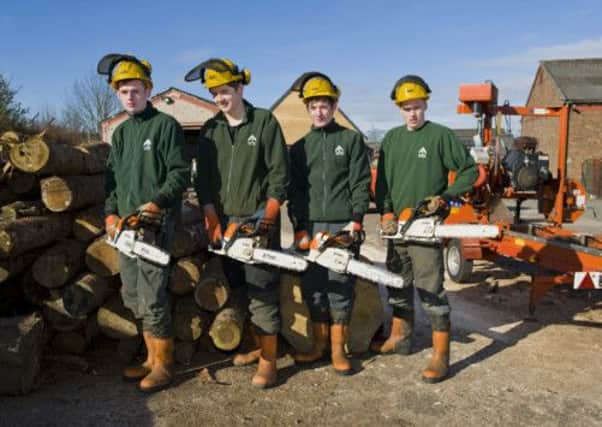Growing opportunities: A job in the great outdoors


But being stuck inside all the time can be pretty unstimulating. There are plenty of fine days too and the rewards and fulfilment of a job in the great outdoors are often immense.
For many young people, working with nature may not be the most obvious career choice, but there are lots of opportunities to consider, and the skills learned can also be applied to other forms of employment. It is this tangible link that has been recognised by Forestry Commission Scotland (FCS) which is pioneering a skills training programme for unemployed youngsters.
Advertisement
Hide AdAdvertisement
Hide AdThe training is part of the Scottish Government’s national drive to tackle youth unemployment and is being delivered in the Central Scotland Green Network area. It is run in partnership with training providers from social enterprises and third sector organisations.
Under the scheme, participants are taught forestry and employability skills while they carry out forest maintenance tasks that are helpful to the commission and local communities. Jobs include chainsaw training, scrub cutting, high pruning and landscaping.
Over half of those who completed the 2011 pilot programme continued on to further training, volunteer roles or employment, with 36 per cent in jobs after training. Such has been its success that it is now being rolled out for another two years and, by the end of the period, it is anticipated around 440 young unemployed people will have been given a helping hand.
Joneen Clarke, employment skills manager at FCS, says the initiative was developed with an eye on providing youngsters, many of whom are disadvantaged, with training in a variety of land-based skills with a real focus on teamwork.
“The groups range from vulnerable young people with learning difficulties and those who have left school with no formal qualifications to individuals who have made court appearances or served a custodial sentence,” she says.
“Participants work on either Forestry Commission or publicly owned land within the Central Scotland Green Network area for between ten and 26 weeks. During this time, we take them on a journey. At the beginning we often find people suffering from low self-esteem, with little structure and motivation in their lives. By the end of the programme, many have gained the confidence to progress to the next step, exploring new avenues from volunteering to further training and, in many cases, full time employment.”
One of the youngsters who has benefited is Craig Cessford, 18, from Dalgety Bay. He left school at 16 because he was dyslexic and was struggling with reading and writing.
Advertisement
Hide AdAdvertisement
Hide Ad“The programme is all about teaching young folk to adapt to working life, helping you to understand what employers want and giving you the skills, but also the confidence to make your life better,” says Craig.
Another beneficiary is 16-year-old Samantha Hancock from Glenrothes. She left school in October 2012 but was unable to find work. She joined the scheme after gaining work experience with her grandfather’s gardening business.
“I hate the idea of being stuck in an office all day, so I really enjoy the physical parts of the job. It keeps you motivated and it is great being outdoors. More women should think about a career in forestry. We are just as capable as the guys,” she says.
As Joneen points out, this is a programme that not only has the ability to provide life-changing skills for youngsters, but also delivers real benefits to the wider community by enhancing our woodlands. “The feedback from local residents about the work of the volunteers has been wonderful and demonstrates the impact that these programmes are having not only on the lives of the individuals involved but also on local communities and the environment,” she says.